Do whales have gills? No, whales don’t have gills since they are not fish. Whales are marine mammals, and mammals don’t have gills to breathe. Rather, they have lungs. In the case of whales, they have blowholes, like a human’s nose, connected with the trachea and lungs.
In this article, I will describe whales breathing and the anatomical process in more detail.
Do Whales Have Gills?
Whales don’t have gills because they’re mammals, just like us. If you’ve ever seen a picture of a whale with gills, that’s not accurate. You might have seen a whale shark, which is actually a fish.
In addition, understanding whale respiratory anatomy evolution is crucial. Historically, whales originated from land animals, not fully aquatic beings.
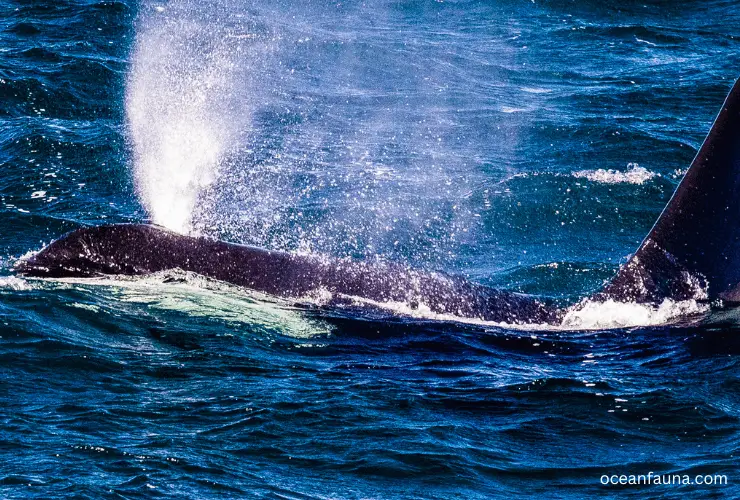
Initially, whales had land-based features, including nostrils on the top of their heads. Over time, these nostrils evolved, relocating backward to become blowholes. Here is a brief on whale respiratory anatomy.
Whale Blowholes
Blowholes are the nasal openings of whales. They can be seen on the top of a whale’s head and function as an airway to the lungs. The blowhole functions almost like a human nose.
Do all whales have a blowhole? Yes. All whales have blowholes. Some have one blowhole, while others have two. However, the number and position of blowholes differ between different species of whales.
Whale Lungs
Whale lungs aren’t split into two parts like ours. Instead, they have special air sacs. These sacs let them take in a lot of air quickly and release it slowly. This way, they can stay underwater for a long time without coming up for air.
Whales Diaphragms
Whales have a diaphragm, just like humans. This muscle is at the bottom of the ribcage and helps them breathe. It moves in and out, making room for air to come in and go out of the lungs.
How Do Whales Breathe? Whale Respiratory Adaptations
Whales breathe through blowholes on top of their heads, a feature unique to them. When the whale inhales, the blowhole opens, filling its lungs with air. When the whale exhales, air shoots out and forms a misty cloud above the water.
Taking in a lot of air allows whales to stay underwater longer. They have a unique vascular system designed for deep dives. This system helps them hold more oxygen and carbon dioxide in their blood.
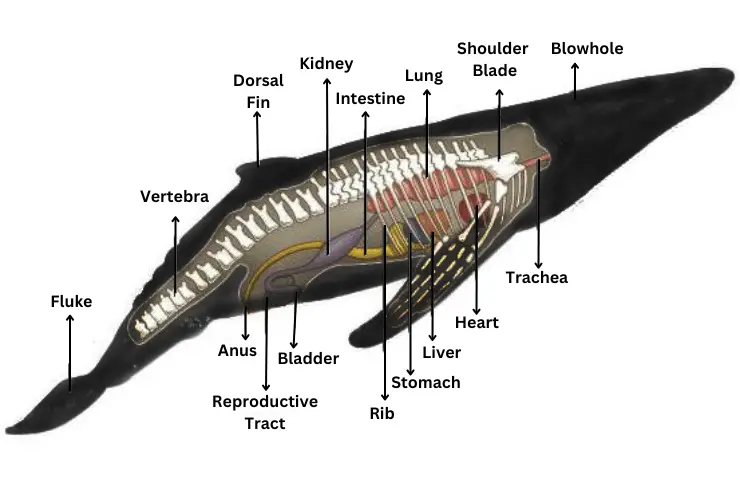
The vascular system balances both water pressure and body fluids during deep dives. To make this effective, whales circulate blood and eliminate waste like carbon dioxide while underwater.
Whales have a muscle called the diaphragm, which they use for quick, deep breaths before diving. Slow exhales and quick, deep inhales help whales save energy and stay underwater longer. This enables them to dive deeper than any other mammal without getting tired or hurt.
Why Do Whales Not Have Gills?
Whales do not have gills, because they are not fish. They are aquatic mammals. Instead of gills, they have lungs to get oxygen from the air.
Gills work well underwater, but mammals like whales need to breathe air. They have blowholes on their heads, like nostrils, for quick breathing even when partly submerged.
Being big, whales need to surface to get enough oxygen, unlike smaller fish. The air at the surface has more oxygen than deeper ocean water. Apart from body differences, whales also act, unlike most gilled sea animals. They spend more time at the surface to meet their breathing needs.
Some whales, like the sperm whale, can hold their breath for about 90 minutes. But all whales need to surface for air before diving again. This keeps them active underwater for a long time and keeps their lungs healthy.
How Do Whales Store Air?
Whales have a smart way to store air in their lungs. The oxygen stays in special air sacs. These sacs are linked and are super good at storing and moving oxygen.
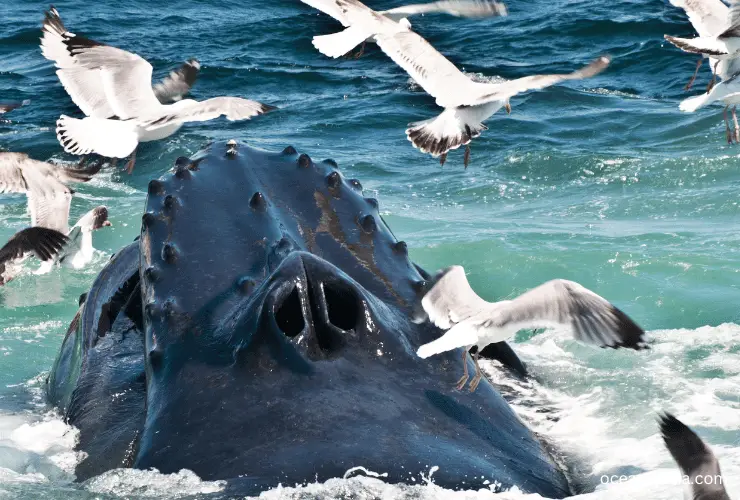
When whales dive, they use this stored oxygen to keep breathing. They slow down their heart rate and limit blood to some organs. This lets them stay underwater longer and gives them more time to hunt.
To save more oxygen, whales take big but shallow breaths while underwater, not small and quick ones. The stored oxygen slowly gets used up, letting them breathe during their dive.
A protein called myoglobin in their muscles helps. It boosts how much oxygen these sacs can hold, so whales can stay underwater even longer.
How Much Oxygen Do Whales Store in The Lung?
What about whale lung capacity measurement? Whales don’t keep as much oxygen in their lungs as other mammals do. They store only about 25% there, while humans keep about 36% in their lungs. Most of a whale’s oxygen, about 75%, is in its blood, not its lungs. Their blood moves oxygen really well, so they don’t need to keep as much in their lungs.
Whales have a special type of hemoglobin in their blood. It carries oxygen well, so they can hold more and get more from each breath. Whales also have a cool system to dump out carbon dioxide but keep oxygen. This helps them store less and still be okay.
These systems make the blood flow faster. So, oxygen gets around quicker than just using lung storage.
Do Whales Have Nose Like Humans?
Whales have blowholes on the top of their heads that work like a human’s nose. You could say the blowhole is the whale’s nose. A whale’s blowhole has two strong flaps. They open and close to let air in and out when the whale breathes. The blowhole links to the whale’s lungs. It can close tight when the whale goes underwater.
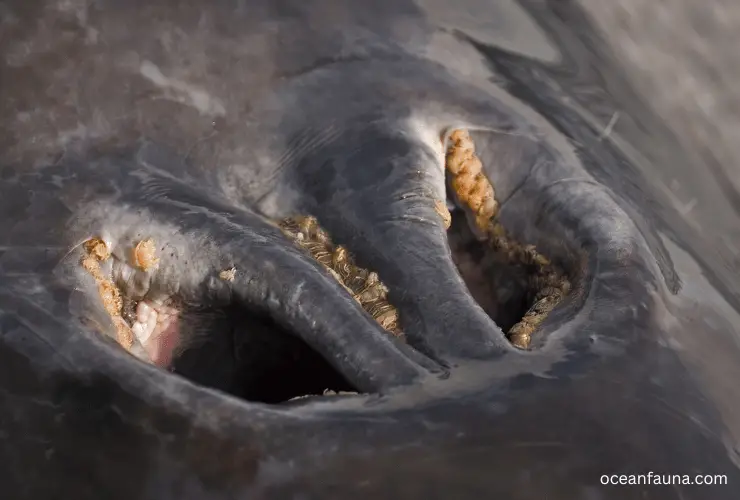
Whales have evolved over millions of years to become extraordinary deep divers. Their bodies, specifically their rib cages and lungs, have adapted to withstand the immense pressure found at great depths. When a whale dives, its rib cage and lungs collapse, compressing the air they contain into a small space. This helps the whale absorb less nitrogen, reducing the risk of getting ‘the bends.’
Also Read: How Long Does a Whale Hold Its Breath?
Also, whales don’t smell much. They mostly use their great hearing and sight to talk and find food.
How Big Are Whale Lungs?
How large is a whale’s lung? The lungs of certain whale species are roughly as large in size as a small car. Take, for instance, the blue whale whose lungs can reach up to 8 feet long and 5 feet wide – that’s an incredible feat.
Not only is their size remarkable, but so is their efficiency. Compared to whale lung capacity vs. body size, they can hold nearly 90% of their body weight in the air. Theoretically, a whale lung could contain more than 100 tons – well over 200,000 lbs – of oxygen-rich air. This substantial capacity allows them to stay below sea level for extended periods ranging from 60 minutes up to 90 minutes at a time.
What Is Special About a Whale’s Lungs?
Whales’ lungs are unique. They’re not like those of other mammals. They have lots of small air sacs that are connected. This helps them breathe in and out slowly. So they can stay underwater for a long time without needing to breathe.
Whales are also good at using oxygen. When they dive, they slow down their heart rate. This makes them use air better than humans do. These traits help whales live well underwater.
Impact On Whales for Not Having Gills
Why do whales come up for air? Whales don’t have gills to get oxygen from water. So, they need to come up for air often. Also, they can’t stay underwater for too long. That’s why they have to resurface about every hour.

Whales can’t swim in places like shallow waters or coral reefs. These areas have low oxygen. Low oxygen makes it hard for whales to find food. It can also make them sick from stress.
Additionally, if whales get stuck underwater in a low-oxygen area, they can die. This makes it crucial for them to find areas with enough oxygen.
Are There Any Benefits for Whales Having Lungs?
Whales don’t have gills. So they can avoid water-borne parasites and poisons. So, having lungs instead of gills is good for a whale’s health.
Also, the lungs are better than the gills at getting oxygen. So whales can stay underwater longer. Being more efficient helps whales have more energy. This is good for their growth.
Lungs work better than gills deep underwater. There’s too much pressure for the gills to get oxygen. Gills use up lots of space. Having lungs gives whales more room. This helps them store food and grow bigger.
FAQs
How Many Lungs Do Whales Have?
People often ask, “Do whales have two lungs like humans?” Whales have a single large lung, not two like other mammals. They also have air sacs linked to this lung that run through their bodies. These air sacs, known as pneumatic cavities, let whales breathe in a lot of air slowly. This slow breathing lets them stay underwater for a long time before needing air.
Where is a whale’s lung located?
Whales’ lungs are located within the thorax after the trachea line, which is the middle part of their body. The structure of whales’ lungs differs from most other mammals. They have interconnected air sacs, allowing whales to have large volumes of oxygen intake circulating throughout their bodies.
How do whales withstand pressure?
Whales’ lungs are located within the thorax after the trachea line, which is the middle part of their body. The structure of whales’ lungs differs from most other mammals. They have interconnected air sacs, allowing whales to have large volumes of oxygen intake circulating throughout their bodies.
Can whales breathe underwater?
No, whales cannot breathe underwater. The reason is they don’t have gills like other aquatic animals. They are mammals, and rather than gill, they have lungs. So they need to come up for air regularly to survive.
Do whales need water to breathe?
No, whales don’t need water to breathe. They need air, just like humans do. But it doesn’t mean they can live on land. They need water to survive by hunting for food, moving, and maintaining their body temperature. The water around them helps regulate the whale’s body temperature and allows them to move easily. They need to come up on the water’s surface to breathe as their lungs won’t work if filled with liquid.
Do whales breathe air?
Yes, whales breathe air through their lungs, just like other mammals need oxygen to live. But they can hold their breath for a long time because they live in water. They also get more oxygen in each breath compared to land animals.
Conclusion
So, you now have a concise understanding of how whales breathe with lungs rather than gills as marine mammals. You also understand the positive and negative effects of such breathing.
You also should know about whale respiration and climate change impact. Whales need air to live, but environmental changes like warm water and acid seas can mess that up. So, we need to be careful to protect nature and biodiversity.

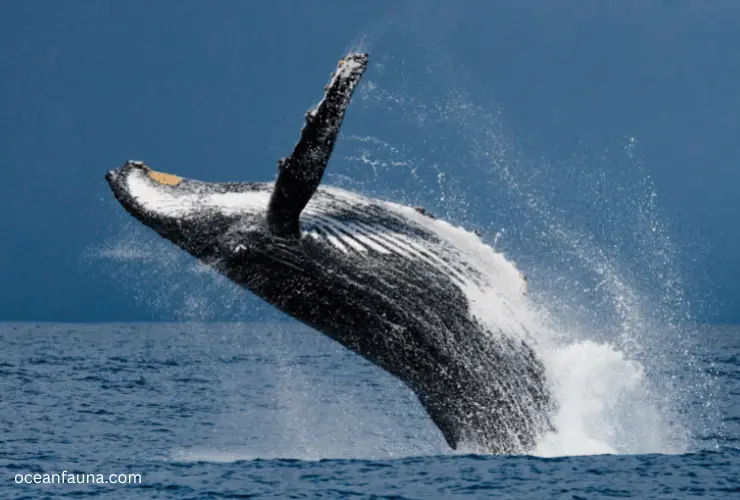
1 thought on “Whales Breathing: Do Whales Have Gills or Lungs?”